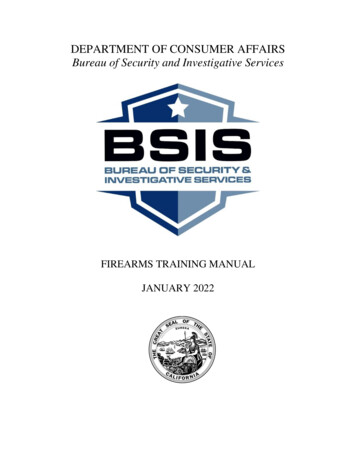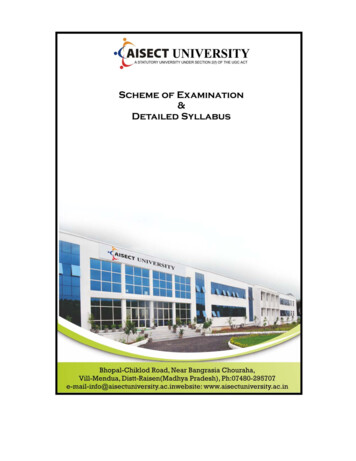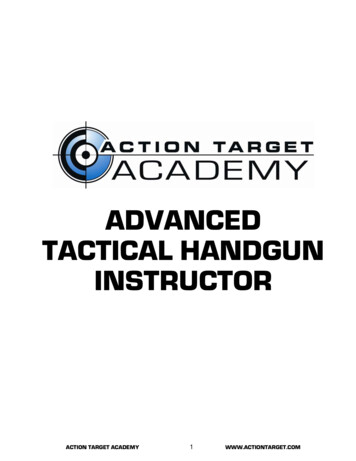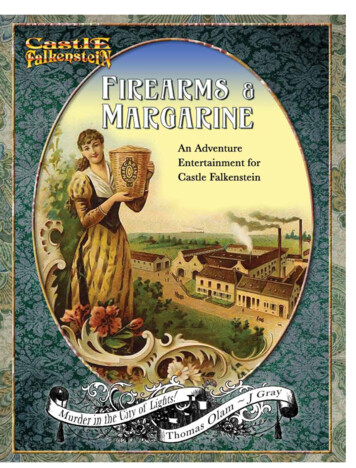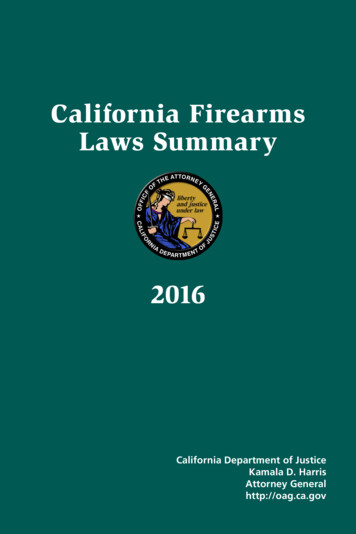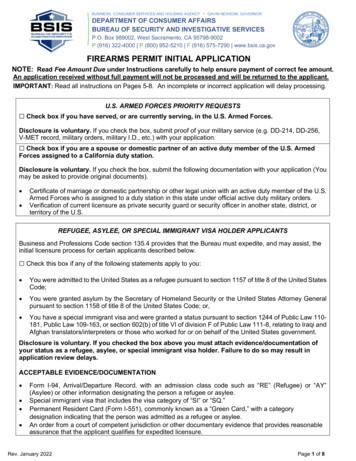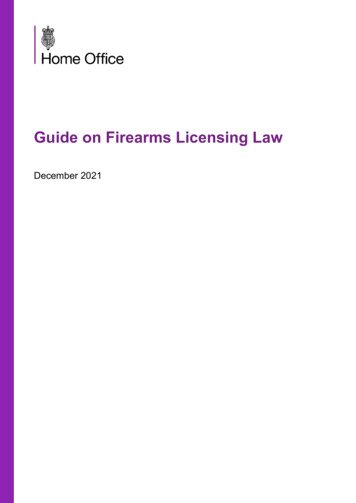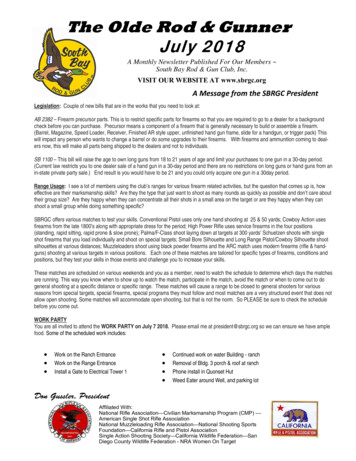
Transcription
Firearms/Tool MarksTraining ManualDecember 2016
Washington State Patrol Crime Laboratory DivisionFirearms/Toolmarks Training ManualTable of ContentsA. ADMINISTRATIVE MATTERS AND PROCEDURES5B. BACKGROUND/HISTORY OF FIREARMS IDENTIFICATION ANDCURRENT TRENDS10C. FIREARMS & AMMUNITION DEVELOPMENT AND CURRENT TRENDS 22D. MANUFACTURE OF MODERN FIREARMS27E. MANUFACTURE OF MODERN AMMUNITION38F. INSTRUMENTATION43G. EXAMINATION OF FIREARMS47H. BULLET EXAMINATIONS AND COMPARISONS69I. CARTRIDGE/CARTRIDGE CASE EXAMINATIONS AND COMPARISONS 85J. SHOTSHELL AND SHOTSHELL COMPONENT EXAMINATIONS ANDCOMPARISONS97K. GUNSHOT RESIDUE EXAMINATIONS AND DISTANCEDETERMINATIONS108L. TOOLMARK EXAMINATIONS AND COMPARISONS121M. SERIAL NUMBER RESTORATION143N. RESEARCH PROJECT, REPORT WRITING, EXPERT TESTIMONY ANDEXTERNAL LABORATORY REVIEW AND TOURS152FATM Training ManualApproved by CLD Quality ManagerPage 2 of 256All Printed Copies Are UncontrolledRevision December 28, 2016Revision 4
Washington State Patrol Crime Laboratory DivisionFirearms/Toolmarks Training ManualINTRODUCTIONThe following training manual will allow you as an examiner trainee to guide yourself through thevarious areas of knowledge integral to the field of firearms/toolmark identification. This manual isgeneric in its layout and allows some modification by the individual training scientist or technicallead to meet local conditions. It is paramount that you keep before you the primary and ultimateobjective of this training period: to independently and competently examine and compareevidence relating to firearms and toolmark identification; to independently and competently renderan opinion and reach conclusions relating to your examinations and comparisons; and to giveexpert testimony in court in matters encompassed within the broad definition of firearms/toolmarkidentification and to do this in a professional, competent and an impartial manner. The obligationis yours to maximize on the effectiveness of the training period as an opportunity to learneverything possible in this field. The extent to which you exert yourself during this training andevaluation period will bear directly on the quality of your performance in the laboratory and on thewitness stand. Note well that your technical abilities and your testimony will, in turn, bear directlyon the future situations of accused persons, and especially in the discipline of firearms/toolmarkidentification, the lives of accused persons can hang in the balance. You have a moral andethical obligation to prepare yourself technically and professionally during training in order to beable to perform according to the most rigid standards.You will be expected to carry out a study of all pertinent section equipment, the Firearms andToolmarks Technical Manual, the Standard Operations Manual, the Quality Procedure Manual,the Safety Manual, and this training manual, as well as print, video and physical reference files.Integral to your course of study will be frequent daily contacts with section personnel with specialexpertise in certain areas. Do not hesitate to ask anyone a question, whether an examiner,supervisor, or technical lead.Your study will include many printed references, including the basic material listed after each areaof study. It is expected that during the training period that you will become thoroughly familiarwith these basic references. Further, it should be noted that you should not restrict your effortsand research to those basic references. One of your primary sources of additional informationwill be the Firearm Section reference library. Familiarize yourself with the library's contents of alltypes, including the reference files, related indices, manufacturers' literature and the journal of theAssociation of Firearm and Tool Mark Examiners.It is required that you keep a loose-leaf notebook of your study notes on each of the items shownin the syllabus for research, discussion, demonstration, study or practical work. Your notebookcan include handwritten notes, charts, graphs, photographs, brief photocopied material, etc., atyour discretion, but it must address and broaden on each of the required items of study set out inthe syllabus. Organization of your notebook in a format that parallels the syllabus is suggested.This notebook will serve as a ready reference in the months and even years following yourqualification, and will assist in documenting your progress during training.A research project or projects, in addition to certain collateral duties assigned as a learningexperience may supplement your training syllabus. You should be prepared to discuss yourpreferences in regard to a project or projects and collateral duties with your supervisor.This training manual provides a framework for addressing the most important part of your training:preparing you to independently and competently examine firearms/toolmark related evidence andindependently and to competently reach conclusions and render opinions concerning yourexaminations and comparisons. This on-the-job, hands-on experience is the core of your trainingand you will be assigned to work with experienced examiners during your training period. Thiswill insure that you have sufficiently covered each aspect of this training manual and have a basisfor continuing to develop after you have graduated beyond your initial qualification andcertification.FATM Training ManualApproved by CLD Quality ManagerPage 3 of 256All Printed Copies Are UncontrolledRevision December 28, 2016Revision 4
Washington State Patrol Crime Laboratory DivisionFirearms/Toolmarks Training ManualYour training will be monitored and assisted by your Technical Lead, who has responsibility fortraining matters. The Technical Lead may coordinate outside schools, tours, lectures andcontacts. The Laboratory Director, Supervisor and/or your Technical Lead will evaluate yourprogress through this training manual and will generate IOCs as modules are completed.The order of completion for the training modules may be modified from the original order due toexternal training opportunities and/or the trainer’s discretion. If the trainee attends NFEA, CCI oranother training program for the majority of their training, the trainee along with their trainer willreview the training material supplied by the external training program and compare it to the WSPtraining manual to assess whether the training objectives set forth in each module were achievedthorough the external training program. If an objective was not completed, the trainer willdetermine an appropriate procedure for completion.External training courses (i.e. armorer’s courses) and reworked cases may be used as asubstitute for training assignments and practical exercises according to the trainer’s discretion.If a firearm listed in a training assignment or practical exercise is not available within the WSPCLD firearms reference collection, a similar design or type of firearm may be substituted with thetrainer’s approval.Continuing EducationThis manual is based on the Association of Firearm and Toolmark Examiners (AFTE) trainingmanual, and serves as a basis for training. The trainee is expected to continue training after thecompletion of the modules in order to stay current with the field. This continuing education mayinclude AFTE meetings, factory tours, armorer’s courses, gelatin tests, local police ranges, theSHOT show, and reading current firearms literature.FATM Training ManualApproved by CLD Quality ManagerPage 4 of 256All Printed Copies Are UncontrolledRevision December 28, 2016Revision 4
Washington State Patrol Crime Laboratory DivisionFirearms/Toolmarks Training ManualA. ADMINISTRATIVE MATTERS AND PROCEDURES1.Discuss the laboratory Quality Assurance Process and the Proficiency Testingwith your Laboratory Director or Supervisor. Become knowledgeable aboutthe proficiency-testing program administered by the outside independenttesting services. Particularly be aware of testing and the results of testingconducted within the field of firearms and toolmark identification by thisorganization.Lab Director/Supervisor2.Discuss the laboratory policy regarding the reexamination of evidence withyour Laboratory Director/Supervisor.Lab Director/Supervisor3.DateMeet with representatives from other functional areas to observe howevidence is processed by their section and discuss how evidence may beexamined by more than one functional area, which may affect firearmsevidence examination.Supervisor6.DateMeet with the Lab Director and discuss the laboratory's mission, organizationand capabilities.Lab Director/Supervisor5.DateDiscuss the opportunities for advancement within the Firearm Section and thelaboratory system with your Lab Director/Supervisor.Lab Director/Supervisor4.DateDateDiscuss with your Lab Director/Supervisor the laboratory policies regardingthe following:a. Providing verbal results prior to release of a written laboratory report.b. Inquiries from submitting agencies and/or attorneys.c.Handling of phone logs and subpoenas.d. Administrative documents commonly seen in case files.e. Providing a laboratory report to user agencies.f.Laboratory policy concerning confidentiality.Lab Director/SupervisorFATM Training ManualApproved by CLD Quality ManagerPage 5 of 256All Printed Copies Are UncontrolledDateRevision December 28, 2016Revision 4
Washington State Patrol Crime Laboratory DivisionFirearms/Toolmarks Training Manual7.Become familiar with the requirements and the facilities available for thesecure storage of evidence within the section. Observe the evidencesubmission process and discuss this with a Property and Evidence Custodian.Review the request for laboratory examination (RFLE), and understand theimportance of maintaining the chain of custody.Lab Director/Supervisor8.Become familiar with the requirements of section security in regard tofirearms, evidence while under examination, controlled access, and sectionspace security. Discuss this with the Supervisor and/or an examiner from e yourself with the Firearms Reference Collection (FRC):a. Learn how to locate firearms in the FRC using the FRC inventory listings.b.Know the correct procedure for checking a firearm out of the FRC.Supervisor/ExaminerDate10. Be briefed by the Supervisor in regard to their files, records and procedures inregard to delinquent cases, annual and sick leave, time and attendance,report files, ordering expendable supplies, purchase orders and obtainingnecessary tools, equipment and protective clothing.SupervisorDate11. Review the use of the Laboratory Information Management System (LIMS).SupervisorDate12. Read the WSP CLD PowerPoint presentation on Cognitive Bias and be ableto discuss types of bias and identify ways to minimize cognitive bias.SupervisorDate13. Read the pertinent sections of the Safety Manual regarding the use ofPersonal Protective Equipment (PPE) as well as the proper handling andexamination of evidence that may be contaminated with infectious diseases.(Use Training Assignment #1 to complete this objective.)FATM Training ManualApproved by CLD Quality ManagerPage 6 of 256All Printed Copies Are UncontrolledRevision December 28, 2016Revision 4
Washington State Patrol Crime Laboratory DivisionFirearms/Toolmarks Training ManualStudentDateREFERENCE MATERIALS/ ADMINISTRATIVE MATTERSThe following reference materials serve several purposes: to provide a wider range of resources for use in completing pre-course assignmentsshould you have a particular interest in a given topic. to provide reference materials for your future professional use. to allow you to gain additional depth in particular subject areas.Should you encounter other references in this category, you are encouraged to make additionalnotes about them at the end of this listing.BasicPolicies and procedure manuals for the laboratoryFirearms SafetyDutton, G., “Firearms Safety in the Laboratory”, AFTE Journal, 1997;29(1):37-41.National Laboratory Center, Bureau of Alcohol, Tobacco and Firearms,“Firearms Safety Guidelines for the Forensic Firearms Examiner,”current edition.Chemical SafetySafety Data Sheets (SDS), as applicable, can be obtained in print or on disk from chemicalsupply houses.National Laboratory Center, Bureau of Alcohol, Tobacco and Firearms, “NationalLaboratory Center Safety Procedures Manual,” current edition.Occupational Safety and Health Administration, 29 CFR Part 1910, OccupationalExposures to Hazardous Chemicals in Laboratories; Final Rule.BiohazardsBigbee, P.D., “Collecting and Handling Evidence Infected with Human Disease-CausingOrganisms,” FBI Law Enforcement Bulletin, Jul. 1987.---. The Law Enforcement Officer and Aids, U.S. Government Printing Office, currentedition.FBI Laboratory, Bloodborne Pathogen Exposure Control Plan, current edition.Occupational Safety and Health Administration, Bloodborne Facts - Hepatitis BVaccination, Protection for You, current edition.---. Bloodborne Facts - Holding the Line on Contamination, current edition.---. Bloodborne Facts - Personal Protective Equipment Cuts Risk, current edition.FATM Training ManualApproved by CLD Quality ManagerPage 7 of 256All Printed Copies Are UncontrolledRevision December 28, 2016Revision 4
Washington State Patrol Crime Laboratory DivisionFirearms/Toolmarks Training Manual---. Bloodborne Facts - Protect Yourself When Handling Sharps, current edition.---. Bloodborne Facts - Reporting Exposure Incidents, current edition.---. 29 CFR Part 1910.1030, Occupational Exposure to Bloodborne Pathogens; FinalRule, current version."AIDS/HIV Carriers, An Organizational Response" FBI Law Enforcement Bulletin,June 1989.Personal Protective EquipmentBall, P. and Mikko, D., “Protective Optics,” AFTE Journal, 1992; 24(1):80-81.Occupational Safety and Health Administration, Hearing Conservation, current edition.---. Personal Protective Equipment, current edition.---. Respiratory Protection, current edition.Lead PoisoningCayton, J.C., “Blood Lead Tests,” AFTE Journal, 1975; 7(1):40.Geibel, J., “Ammunition Can Be Hazardous to Your Health (In More than the Obvious Way),”Police and Security News, May-Jun. 1992, p. 11.Gregory, A.M., “At Close Range,” American Society of Law Enforcement Trainers Journal, Vol. 4,No. 2.Martinez, A.M., “Lead Poisoning,” FBI Law Enforcement Bulletin,Aug. 1993, pp. 1-4.Occupational Safety and Health Administration, Standards for Occupational Exposure to Lead,Chapter XVII, Title 29, U.S. Department of Labor, Section 1910.1025.“Publication Availability: Lead Poisoning in Shooting Range - A Menace or a Hoax,” AFTEJournal, 1980; 12(4):101.Physical Plant SafetyOccupational Safety and Health Administration, 29 CFR 1910.155, Fire ProtectionRegulations, Subpart L.Quality AssuranceWashington State Patrol Crime Laboratory Division Quality Manual.Association of Firearms and Tool Mark Examiners, “Association of Firearm and Tool MarkExaminers Quality Assurance Program, 1986,” AFTE Journal, 1986; 18(3):10.Bradford, L.W., “Barriers to Quality Achievement in Crime Laboratory Operations,” AFTE Journal,1983; 15(2): 71.---. “Forensic Firearms Identification, Competence or Incompetence,” AFTE Journal, 1979;11(2):12.FATM Training ManualApproved by CLD Quality ManagerPage 8 of 256All Printed Copies Are UncontrolledRevision December 28, 2016Revision 4
Washington State Patrol Crime Laboratory DivisionFirearms/Toolmarks Training ManualBrundage, D.J., “Proficiency Testing in Illinois,” 1980; 12(4):76.Hodge, E.E., “Guarding Against Error,” AFTE Journal, 1988;20(3):290-293.---. “Guarding Against Error,” AFTE Journal, 1989; 21(2):450-453.Serrill, M.S., “Forensic Sciences: Overburdened, Underutilized,” AFTE Journal, 1980; 12(4):58.Lucas, D.M., “American Proficiency Testing Program,” AFTE Journal, 1985; 17(1):26.“Proficiency Testing Recommended for Crime Labs,” AFTE Journal, 1979; 11(2):22.Thornton, J.I., “Nationwide Crime Laboratory Proficiency Project,” AFTE Journal, 1979; 11(2):23.Individual CertificationKopera, J., “Summary of the Study of the Feasibility of Certification,” AFTE Journal, 1992;24(1):84-90.Kowalski, K.F., “AFTE Certification Program,” AFTE Journal, 1996; 28(4):287-290.Laboratory AccreditationAmerican Society of Crime Laboratory Directors, Laboratory Accreditation BoardManual, current edition.Rabren, C.L., “Laboratory Accreditation,” AFTE Journal, 1982; 14(3):36.AFTE History and Development“Association of Firearm and Tool Mark Examiners Bylaws,” AFTE Journal, 1990; 22(1):61-70.Howe, W.J., “Report on the Formation of the Association of Firearm and Tool Mark Examiners,”AFTE Journal, 1989; 21(2):118-119.Ethics“AFTE Code of Ethics,” AFTE Journal, 1991; 24(3):342-345.“AFTE Code of Ethics,” AFTE Journal, 1993; 25(1): ix.“AFTE Procedures for Enforcement of the Code of Ethics,” AFTE Journal, 1990; 22(4):457-470.WSP CLD Cognitive Bias PowerPoint presentation, WSP CLD IntranetFATM Training ManualApproved by CLD Quality ManagerPage 9 of 256All Printed Copies Are UncontrolledRevision December 28, 2016Revision 4
Washington State Patrol Crime Laboratory DivisionFirearms/Toolmarks Training ManualB. BACKGROUND/HISTORY OF FIREARMS IDENTIFICATIONAND CURRENT TRENDS1.Define the following terms:Firearm identificationBallistics(Use Training Assignment #1 to complete this objective.)Examiner2.DateRead the applicable sections from the basic references and prepare a reporton the history, principles, evolution and scope of firearms identification in itsbroadest sense. Support your report by data accumulated in your notebook.Discuss this with the Training Officer from the section who will review yourreport.(Use Training Assignment #1 and #2 to complete this objective.)Examiner3.DateFormulate an answer to the following questions:a. Is the Forensic Science Discipline of Firearm and Toolmark Identificationan art or science?b. What are the types of conclusions that can be reached in firearmidentification comparisons?c.What is the basis for each of the above conclusions?d. Is it possible for experts in the Forensic Science Discipline of Firearmand Toolmark Identification to disagree regarding their conclusions?Why or Why Not?e. How does "probability" relate to firearm identification?(Use Training Assignment #2 to complete this objective.)ExaminerDateFamiliarize yourself with the "Association of Firearm and Tool MarkExaminers" (AFTE), to include its history, current officers, criteria formembership, committees, the AFTE glossary and the AFTE journal and beable to discuss them.ExaminerDate4.FATM Training ManualApproved by CLD Quality ManagerPage 10 of 256All Printed Copies Are UncontrolledRevision December 28, 2016Revision 4
Washington State Patrol Crime Laboratory DivisionFirearms/Toolmarks Training Manual5.Discuss with system operators the status of the ongoing research initiatives tolink shootings using computer imagery such as NIBIN (National IntegratedBallistics Information Network-formerly DRUGFIRE and IBIS). Attend trainingat NFSTC in Largo, FL if applicable.Examiner6.DateVisit and tour the various laboratories that provide firearms and toolmarkexaminations within your region. Coordinate these visits with your TechnicalLead.Examiner7.DateBe able to demonstrate a practical working knowledge of firearm terminologyusing the AFTE Glossary as the standard.(Use Training Assignment #4 and #5 to complete this objective.)Examiner8.DateSelect a topic for a research project to be completed during your trainingperiod. Obtain approval from your Technical Lead before initiation of theproject. This project should contribute to the overall fund of information in thefield of firearm identification. These results will be shared with the sectionupon completion. In addition, your results should be formatted for publicationin the AFTE Journal and for presentation at an AFTE Meeting.(Use Training Assignment #3 to begin this objective.)ExaminerDateREFERENCE MATERIALSFIREARMS IDENTIFICATION - HISTORY, PRINCIPLES, EQUIPMENT AND CURRENTDEVELOPMENTSThe following reference materials serve several purposes: to provide a wider range of additional resources should you have a particular interestin a given topic. to provide reference materials for your future professional use. to allow you to gain additional depth in particular subject areas.Should you encounter other references in this category, you are encouraged to make additionalnotes about them at the end of this listing.FATM Training ManualApproved by CLD Quality ManagerPage 11 of 256All Printed Copies Are UncontrolledRevision December 28, 2016Revision 4
Washington State Patrol Crime Laboratory DivisionFirearms/Toolmarks Training ManualBooksAssociation of Firearm and Tool Mark Examiners Standardization Committee, Glossary of thethAssociation of Firearm and Tool Mark Examiners 6 edition, available on ATFE’s website.Burrard, G., The Identification of Firearms and Forensic Ballistics, 1st edition, Charles ScribnerSons, NY, 1934, revised edition, A.S. Barnes & Co., NY, 1964.Davis, J.E., An Introduction to Tool Marks, Firearms and the Striagraph, Charles C. Thomas,Springfield, IL, 1958.Gunther, J.D., and Gunther, C.O., The Identification of Firearms, John Wiley and Sons, Inc., NewYork, 1935.Hatcher, J.S., Hatcher’s Notebook, Military Service Publishing Company, Harrisburg,PA, 1947.---. Firearms Investigation, Identification and Evidence, and Textbook of Pistols and Revolvers,Small Arms Publishing Company, Plantersville, SC, 1946.Hatcher, J.S., Jury, F.J. and Weller, J., Firearms Investigation, Identification and Evidence, 2ndedition, Stackpole Books, Harrisburg, PA, 1957.Himmelwright, A.L.A., “Forensic or Legal Ballistics” in Pistol and Revolver Shooting, TheMacmillan Company, NY, 1928.Heard, B.E., Handbook of Firearms and Ballistics: Examining and Interpreting ForensicEvidence, John Wiley & Sons, New York, 1997.Mathews, J.H., Firearms Identification, Volumes I - III, Charles C. Thomas, Springfield,IL, 1962.NRA Firearms Fact Book, 3rd edition, National Rifle Association, Fairfax, VA, 1989.Rowe, W. H., “Firearms Identification”, Forensic Science Handbook, Vol. II, 1988,Saferstein, R. (Ed.), Prentice Hall, Englewood Cliffs, NJ, pp. 393 – 461AFTE JournalAFTE Criteria For Identification Committee Report, “Theory of Identification, Range ofStria Comparison Reports and Modified Glossary Definitions”, 1992; 24(3)Barrett, M.R., “Microchip and the Bullet: A Vision of the Future, 1991; 23(3): 876-883.Bates, J.S., “Investigation of the Assassination of President John F. Kennedy,” 1981;13(1):64.Berg, S.O., “Drama of Forensic Ballistics,” 1979; 11(3):44.---. “Firearms Evidence and the Kennedy Assassination,” 1970; 2(2):2-3.Beck, R., “Alexander von Inostranzeff and the Technical Development of OpticalComparison Systems,” 1989; 21(1):67-72.Biasotti, A.A., “Bullet Bearing Surface Composition: Variables: Fired Bullets,” 1981;13(2):94.FATM Training ManualApproved by CLD Quality ManagerPage 12 of 256All Printed Copies Are UncontrolledRevision December 28, 2016Revision 4
Washington State Patrol Crime Laboratory DivisionFirearms/Toolmarks Training Manual---. “Characteristics in Firearms and Toolmark Identification,” 1980; 12(4):81.---. “Firearms and Toolmark Identification: A Forensic Science Discipline,” 980;12(3):12.---. “Methods Applied to the Comparison of Class and Individual Characteristics inFirearms and Toolmark Identification,” 1989; 21(2):260-263.---. “Photomicrography and Illumination: Some Critical Factors,” 1979; 11(4):60.---. “Proposal for a Computer Based Firearms Class Characteristics InformationSystem,”1970; 2(1):12.Biasotti, A.A. and Murdock, J., “State of the Art of Firearm & Toolmark Identification,“ 1984; 16(4):16.Blackwell, R.J., and Framan, E.P., “Automated Firearms Identification System (AFIDS) Phase I,”1980; 12(4):11.Bradford, L.W., “Forensic Firearms Identification: Competence or Incompetence,” 1979; 11(2):12.Brent, W., “Proved Guilty by Ballistics (Hadley vs Arizona),” 1973; 5(6):5.Byron, D., “Computerized System for Identifying Firearms,” 1982; 82(3):157.Cassidy, F.H., “Information on History of Comparison Microscopes,” 1989; 21(1):67-72.Chamberlain, D., “Microscope Comparison Bridge,” 1972; 4(1):9.Collins, J.M., “IBIS Manual Bullet Acquisition: Mounting Stub Modification,“1997;29(1):70-72.Crossman, E.B., “Qualifications of a Ballistics Expert,” 1985; 17(3):119.Dillon, J.H. and Sibert, R.W., “FBI Laboratory’s DRUGFIRE Program,” 1990; 22(2) :216.Gardner, G.Y., “Computer Identification of Bullets,” 1979; 11(2):26Garland, P.V., “Reexamination of Firearms Evidence in the Robert F. Kennedy Assassination,”1976; 8(3): complete issue.Garrison, D.H., “Guns of Brownsville,” 1986; 18(4):65.---. “Gunsmith and the Soldier”, (Churchill vs. Burrard), 1987;19(2): 181-187.Goddard, C.H., “Criminal Investigation Laboratory as an Aid to Law Enforcement in theFar East,” 1985; 17(3):100.---. “Firearms as Evidence,” 1980; 12(4):93.---. “History of Firearms Identification,” 1980; 12(4):38.---. “History of Firearms Identification,” 1985; 17(1):55.---. “History of Firearms Identification,” 1989; 21(2):263-278.---. “History of Firearms Identification to 1930,” 1993; 25(3):214-228.FATM Training ManualApproved by CLD Quality ManagerPage 13 of 256All Printed Copies Are UncontrolledRevision December 28, 2016Revision 4
Washington State Patrol Crime Laboratory DivisionFirearms/Toolmarks Training Manual---. “Identification of Projectiles in Criminal Cases,” 1987; 19(4):393-402.---. “Scientific Identification of Firearms and Bullets,” 1979; 11(4):97.---. “Valentine Day Massacre: A Study in Ammunition Tracing,” 1980; 12(1):44.Goebel, R., “Comparison SEM First Experiments in Forensic Application,” 1983; 15(2):47.Grove, C.A., Judd, G, and Horn, Horn, R., “SEM: A New Technique for Firearms Examination,”1972; 4(1):19.Hall, A.L., “Missile and the Weapon,” 1980; 12(4):85.Howe, W.J., “Report on the Formation of The Association of Firearm and ToolmarkExaminers,” 1989; 21(2):118-119.Hueske, E.E., “Preliminary Report on the Application of Fiber Optic Videomicroscopy toFirearm and Toolmark Examination,” 1990; 22(3):280-287.Inbau, F.E., “Scientific Evidence in Criminal Cases: Firearms Identification - Ballistics”, 1981;13(2):75.---. “Scientific Evidence in Criminal Cases: Firearms Identification - Ballistics,” 1989; 21(2):280293.Juling, R.J. and Stern, W.W., “Overview of Firearms Identification Evidence for Attorneys, I.Salient Features of Firearms Evidence,” 1981; 13(4): 128.Katterwe, H., “Comparison Scanning Electron Microscope,” 1983: 15(3):141.Lambert, R.R., “Firearms Identification,” 1971; 3(3):23.Lansing, J.F., “Customized Comparison Microscope,” 1973; 5(5):25.Lee, H.C., “Firearm Related Evidence: The Nicola Sacco and Bartolomeo Vanzetti Case,” 1985;17(3):13.Lawyers Cooperative Publishing Co., “Firearms Identification AM JUR PROOF OF FACTS,”1983; 15(3):31.Lutz, M.C., “Consecutive Revolver Barrels,” 1970; 2(5):24.---. “Evaluation of New Fiber Optics System,” 1986; 18(1):12.Mann, M., Espinoza, E.O., and Scanlan, M.D., “Firearms Examinations by ScanningElectron Microscopy: Observations and An Update on Current and Future Approaches,“ 1992; 24(3): 294-303.Masson, J.J., “Computerized Technology,” 1997; 29(1):42-44. Confide nc e Le ve l Va ria tions in FMatty, W., “Comparison of Three Individual Barrels Produced from One Button RifledBarrel Blank,” 1985; 17(3):64.---. “Comparison of Three Individual Barrels Produced from One Button Rifled Barrel Blank,”1989; 21(2):370-374.FATM Training ManualApproved by CLD Quality ManagerPage 14 of 256All Printed Copies Are UncontrolledRevision December 28, 2016Revision 4
Washington State Patrol Crime Laboratory DivisionFirearms/Toolmarks Training ManualMeyers, C.R., “Firearms and Toolmark Identification: An Introduction,” 1993; 25(4):281-285.---. “Objective vs. Subjective Boondoggle,” 1987; 19(1):24-30.---. “Objective vs. Subjective Boondoggle,” 1989; 21(2):413-419.---. “Mythical Striation Match,” 1992; 24(4):364-365.Miller, J., “Book Review: The Law and Forensic Ballistics by T.A. Warlow,” 1997; 29(2):239, 173.Molnar, S., “Comparison Scope Effects Simulated by Use of Photography,” 1971; 3(3):18.---. “What is a Firearms Examiner: Some Provocative Thoughts,” 1970; 2(7):36.---. “What is a Firearms Examiner: Some Provocative Thoughts,” 1989; 21(2):128-131.Moran, B., “Building an Inexpensive High Intensity Fluorescent Lighting System for theComparison Microscope,” 1997; 29(1):49-54.---. “Manual and Automated Bullet and Cartridge Case Comparison Systems: A Commentary,”1997; 29(1):55-57.Murdock, J.E., “Effect of Crowning on Gun Barrel Individuality,” 1970; 2(3):12.---. “Forensic Examination of Firearms and Ammunition,” 1987; 19(2):188-197. (Lecture byRobert Churchill Feb. 25, 1931.)---. “Gun Barrel Individuality and Button Rifled .22 Caliber Rifle Barrels,” 1981; 13(3):84.Ogihara, Y., “5000 Consecutively Fired Bullets and Cartridge Cases from .45 Caliber M1911A1Pistol,” 1983; 15(3):127.Ogihara, Y., Kubota, M., Sanada, M., Fukudo, K., Uchiyama, T., and Hamby, J.E., “Comparisonof 5000 Consecutively Fired Bullets and Cartridge Cases from a .45 Caliber M1911A1 Pistol,”1989; 21(2):331-343.Prieto, M.A., “Firearms Identification Preface”, 1982l, 14(2): 17- 43.Rathman, G.A., and Ryland, S.G., “Use of the SEM-EDXA as an Aid to the FirearmsExaminer,” 1987; 19(4):338-392.Starrs, J.E., “Once More Unto the Breech: The Firearms Evidence in the Sacco andVanzetti Case Revisited: Part I,” 1987; 19(1):37-60.---. “Once More Unto the Breech: The Firearms Evidence in the Sacco and Vanzetti CaseRevisited: Part II,” 1987; 19(1):61-89.Thornton, J.I., “Origin of the Term Land,” 1983; 15(4):8.---. “Some Historical Notes on the Comparison Microscope,” 1978; 10(1):7.---. “Some Historical Notes on the Comparison Microscope,” 1989; 21(2):215-217.---. “Validity of Firearms Evidence,” 1979; 11(2):16.Thomas, F., “Striation Matching and Forensic Firearms Identification,” 1980; 12(3):31.FATM Trainin
Firearms/Toolmarks Training Manual FATM Training Manual Page 5 of 256 Revision December 28, 2016 Approved by CLD Quality Manager All Printed Copies Are Uncontrolled Revision 4 A. ADMINISTRATIVE MATTERS AND PROCEDURES 1. Discuss the laboratory Quality Assurance Process and the Proficiency Testing with your Laboratory Director or Supervisor.

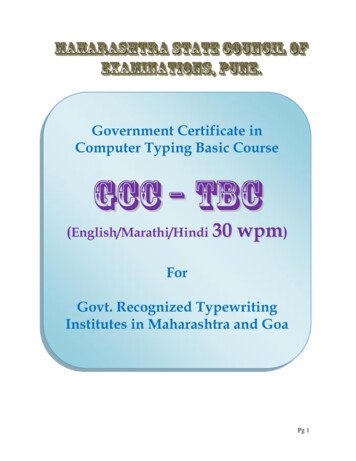
![firearms qualifications [PFP#730045656]](/img/59/firearms2003.jpg)
